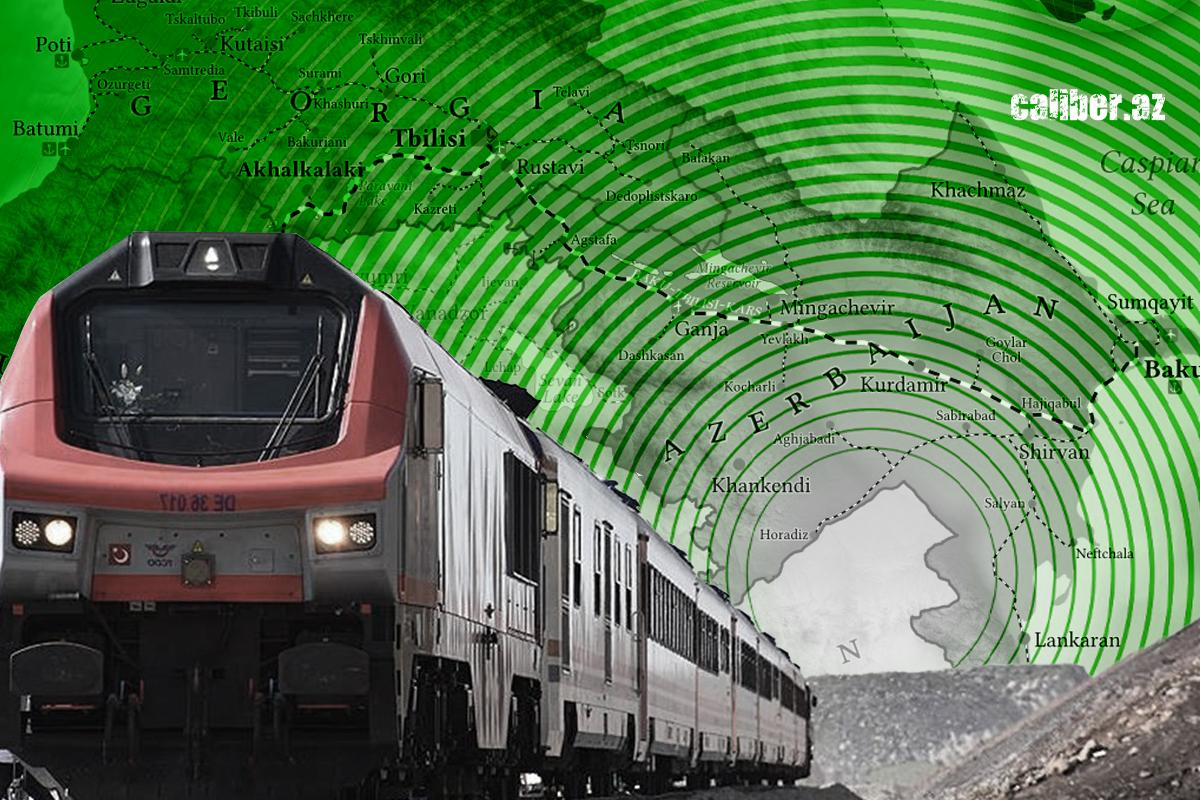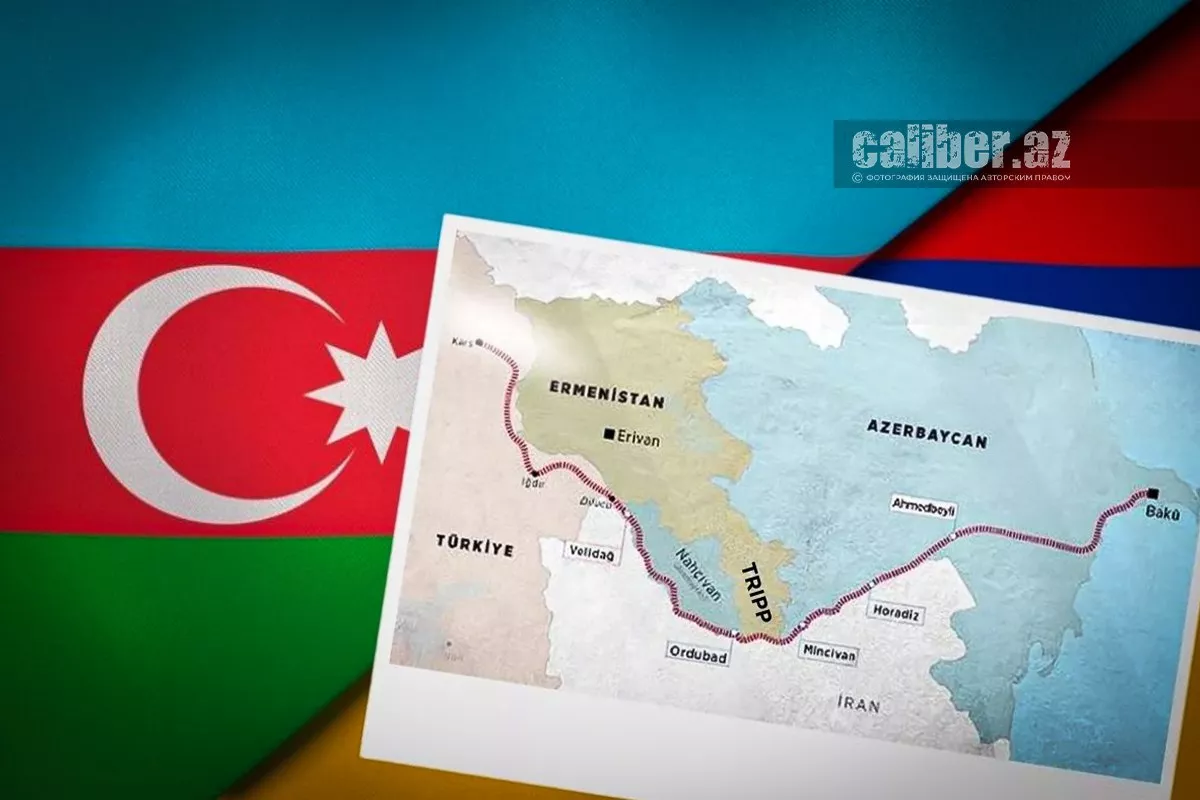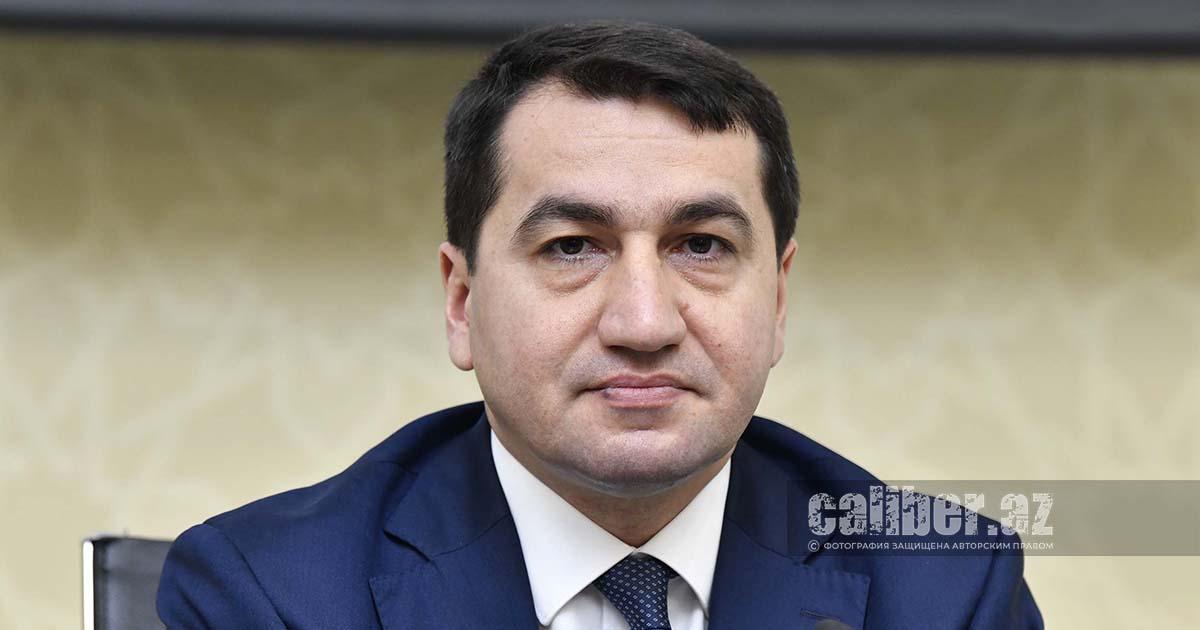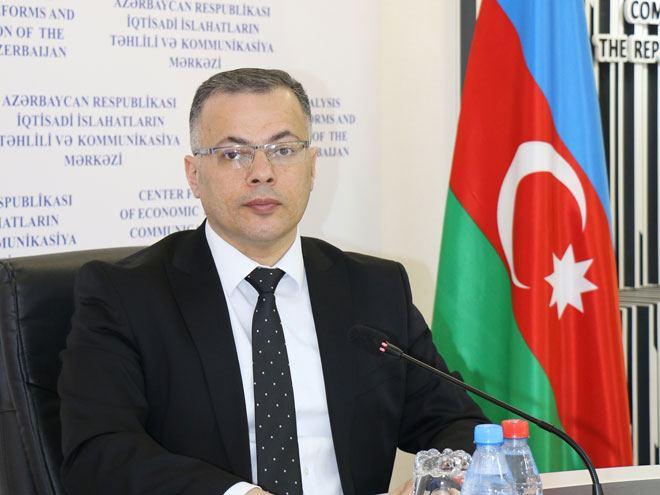Middle Corridor reaches global significance Azerbaijan’s gateway between East and West
Azerbaijan and its partners across the Caspian region are making significant strides in developing the transport and logistics infrastructure of the Middle Corridor. Progress has accelerated in recent years, with major upgrades to railway and road networks, including in the Karabakh region.
A milestone in this effort came in August, when agreements between Baku and Yerevan—mediated by US President Donald Trump—initiated the implementation of the Trump Route for International Peace and Prosperity (TRIPP), creating a new logistics pathway linking East and West. The corridor’s potential and strategic importance were emphasised by President Ilham Aliyev during his address at the 6th Caspian Business Forum in New York.
Over the past several years, European nations, alongside Türkiye, Georgia, and Central Asian states, have proposed multiple initiatives to enhance transit through Azerbaijan via the Middle Corridor. These efforts are gaining momentum. For seven years, the corridor’s combined maritime and rail component—the Trans-Caspian International Transport Route (TITR)—and its key section, the Baku–Tbilisi–Kars (BTK) railway, have been fully operational, underpinning a growing East–West transport network.

Moreover, global interest in the TITR has surged, driven by growing trade with China and Azerbaijan’s central role in the Belt and Road Initiative, which provides Beijing with a direct overland connection to European markets. According to World Bank forecasts, trade between China and the European Union is expected to grow by 30% by 2030.
Notably, container block trains organised in China and transported via the TITR take roughly two weeks to reach their destination—nearly three times faster than shipping by sea through the Suez Canal, which typically takes around 40 days. Trade between Azerbaijan, Georgia, and Kazakhstan—largely propelled by Kazakh exports—is projected to increase by 37% by 2030, while trade between these countries and the EU is expected to rise by 28%.
These advantages are driving the rapid expansion of multimodal container block train transit, both for Chinese and Central Asian goods moving through Azerbaijan and for European and Turkish cargo travelling in the opposite direction. By 2026, cargo throughput on the TITR is expected to triple, exceeding 1,000 train compositions.

Today, genuine interest in the Middle Corridor has also emerged among US business circles. It is no coincidence that the 6th Caspian Business Forum, organised by the Caspian Policy Center, was held in New York under the theme: “Connectivity, Finance, and Energy along the Middle Corridor.”
“Today, we can proudly say that, thanks to Azerbaijan’s long-term vision and tireless efforts, a major project like the Middle Corridor, which provides better synergy between Asia and Europe, has become a reality,” President Ilham Aliyev highlighted in his address to the forum. “Azerbaijan’s favourable geographic location - right at the crossroads of two continents - enables our country to play a pivotal role in connectivity issues.”
The president underscored that Azerbaijan has invested heavily in transport infrastructure along the corridor, including the Baku–Tbilisi–Kars (BTK) railway, the Baku International Sea Trade Port (BISTP), and the Caspian cargo fleet—all critical components ensuring the uninterrupted operation of the Middle Corridor. He also noted that its full operationalisation was made possible not only by Azerbaijan’s economic capacity but also by the country’s political stability and secure environment.
Work continues along the Azerbaijani segment of the Middle Corridor to modernise, digitise, and expand its infrastructure. “Over the past three years, cargo shipments along the Middle Corridor through Azerbaijan have grown by approximately 90 percent, while transit times have been significantly shortened. Projections indicate that by 2030, the freight capacity of the Middle Corridor will triple compared to 2021, with transit times expected to be cut in half,” President Ilham Aliyev stated during his address at the New York Business Forum.
The head of state also emphasised the significance of the joint declaration signed in August in Washington between Azerbaijan and Armenia, which laid the foundation for the TRIPP project. This initiative ensures seamless connectivity between the main part of Azerbaijan and the Nakhchivan Autonomous Republic (NAR).
“I am sure that TRIPP, to become the next crucial segment of the Middle Corridor, will serve as a key transport link connecting Asia and Europe, expanding the transit capacity for international cargo shipments, and contributing to the prosperity of regional countries as well as their integration into global supply chains,” the President said. “TRIPP also offers significant potential for the future transportation of energy resources, the export of electricity - particularly renewable energy - and the installation of fibre-optic lines, thereby helping transform the region into an international hub for trade and digital communications.”

The key messages outlined by President Ilham Aliyev resonated throughout the New York forum. In his opening remarks, Efgan Nifti, Director of the Caspian Policy Centre, highlighted that over the past two months, significant developments had taken place in the Caspian region, including the initialling of a peace agreement between Armenia and Azerbaijan, progress in the development of the Middle Corridor, engagement from various international donors, and rising investment.
“The agreement signed between Armenia and Azerbaijan with US support is not only a breakthrough in achieving political stability but also marks a new era in economic relations. With the launch of the TRIPP project, the South Caucasus will become more integrated than ever before,” Nifti noted.
Meanwhile, Caleb Orr, Senior Advisor to the US Deputy Secretary of State, emphasised the strategic importance of the Caspian region—including the South Caucasus and Central Asia—for US policy: “This region represents an important strategic interest for us in terms of investment and development.”
In his speech, Conor Coleman, representative of the US International Development Finance Corporation, addressed Washington’s investment interests in the region, highlighting not only the transport sector but also energy and environmental infrastructure (“green” initiatives). The aspects of regional logistics projects and the growing investment potential of the Caspian region were also covered by representatives from Turkey and Kazakhstan participating in the forum.
"Cargo transportation along the Middle Corridor is expected to exceed 50 million tonnes," Hikmet Hajiyev, Assistant to the President and Head of the Foreign Policy Department of the Presidential Administration, stated at the New York forum. "The cargo handling capacity of the Baku International Sea Trade Port (BISTP) is 25 million tonnes per year. Work is underway to expand this capacity. Since 2020, the railway project from Baku to Zangilan and the border with Armenia has also been under development and is planned for completion by mid-2026."

Hajiyev also highlighted ongoing work on the 42-kilometre segment of the corridor in Armenia, which involves participation from US partners. “The third segment covers Nakhchivan. Additional investments are being made here as well, and we are inviting other international partners, including European countries, to collaborate. The main goal is to transform the South Caucasus into a space of cooperation,” he stated.
Regarding the potential of the Middle Corridor, it is worth noting a recently published collection by the respected Romanian academic publisher University Press Târgu Mureş, titled “The Middle Corridor: Navigating Current Realities and Embracing Future Prospects.” This important scholarly work, prepared in English at the initiative of the Azerbaijani Centre for Analysis of Economic Reforms and Communications (CAERC) and the Organisation for Economic Co-operation and Development (OECD), involved 22 researchers from 10 countries. The collection examines the economic impact on countries along the corridor, showcases more flexible and efficient transport management strategies, explores the application of digital technologies and innovative logistics approaches, and presents current academic and conceptual proposals to further enhance the corridor’s potential.
Vusal Gasimli, Executive Director of CAERC and Doctor of Economics, who compiled and edited the volume, explained in the introductory article of the collection that the idea for the book had originated in September 2023 during the economic forum in the resort town of Karpacz in southeastern Poland. He noted that, together with his co-authors, they had decided to take a new approach and focus on a book about the Middle Corridor—a developing multimodal transport artery and a viable alternative for connecting Asia with Europe—which he considered particularly relevant in light of recent geopolitical events, especially the Russian-Ukrainian and Middle Eastern conflicts.
Gasimli also emphasised that the Middle Corridor serves as a catalyst for economic integration and cooperation, promoting the development of trade links among participating countries. He highlighted its main advantages, including the diversification of trade routes, reduction of overdependence on a single path, mitigation of potential logistics disruptions, improvement of transport connectivity, and fostering of economic integration. He added that the corridor also stimulates trade and investment opportunities in the countries involved in the project.

In turn, in an article published in the collection, Vusal Gasimli noted that the Middle Corridor faces certain “bottlenecks,” which Azerbaijan, Georgia, Kazakhstan, and Turkey sought to address by signing a Roadmap in November 2022, outlining priority investments and actions to improve corridor efficiency. To the same end, in June 2023, Azerbaijan, Georgia, and Kazakhstan agreed to establish a joint logistics operator for the TITR.
In his article, the head of CAERC noted that stakeholders surveyed by the OECD had identified several issues affecting the competitiveness of the Middle Corridor, including bottlenecks at key points that create unpredictability in cargo delivery times. According to the OECD analysis, the route faces challenges related to multimodality and containerisation, while ports and border crossings experience congestion due to insufficient integration between rail and maritime transport. In the maritime sector, he added, congestion at Caspian Sea ports, combined with a limited ferry fleet, leads to delays.
The expert article also outlines medium-term objectives for improving the efficiency of the Middle Corridor. These include the critical need to enhance multimodal infrastructure, expand the container fleet on the Caspian, and increase railway capacity. Comprehensive services along the entire corridor must be developed, the shortage of dry ports and logistics facilities addressed, and strict environmental standards enforced throughout the route. Equally important is the standardisation of cross-border, customs, and other procedures, as well as the full digitalisation of logistics in the TITR participating countries. Integrating artificial intelligence (AI) into transport infrastructure management processes will further support seamless, sustainable, and secure overland logistics between the countries of the Caspian region.








